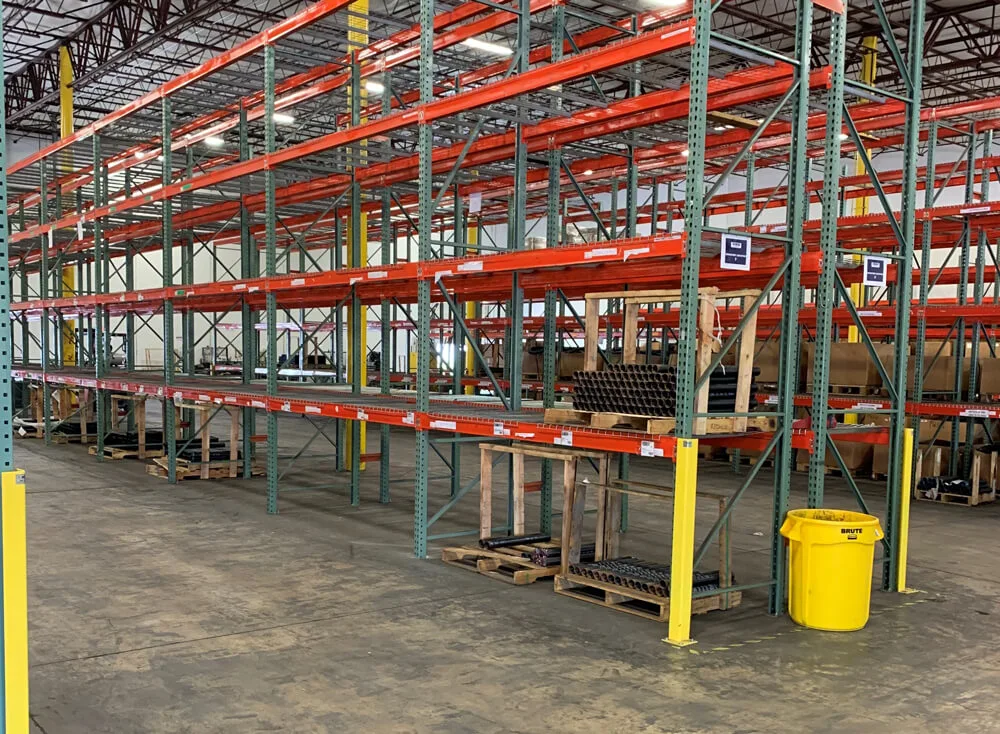Setting up your warehouse can be extremely capital-intensive. Aside from buying or leasing the actual space, there’s various equipment you need to invest in. In all, it can easily set you back thousands of dollars.
One alternative is to consider used equipment that’s considerably less expensive. However, many entrepreneurs stay away from them because there’s the risk of getting a subpar product.
However, when approached and selected carefully, you can get used equipment that’s just as durable and reliable as brand new.
How to Choose Quality Used Warehouse Equipment
Picking the right warehouse equipment, whether new or used, starts with understanding your requirements. The size of your warehouse, the number, and type of items you need to store, and inventory management methods are critical considerations.
Once you’ve determined your requirements, choose a reliable or reputable used equipment dealer. This will go a long way in ensuring you only get quality products. If possible, source from a company with solid servicing and post-purchase support if your equipment breaks down.
When it comes to cost, you shouldn’t necessarily go with the cheapest option, even if you’re doing it to cut costs. Cheap but faulty equipment can end up costing you more if it breaks down and disrupts your operation. Always look as if you’re buying something new.
Used Warehouse Equipment Condition
When choosing used warehouse equipment, you must look carefully at its condition. This can tell you a great deal about its durability and reliability. Any dents, scratches, or rusting can potentially compromise the structural integrity of the equipment. This is especially important in shelves and racks that need to hold heavy items.
For forklifts and other machinery, consider the condition of the engine as well. Take note of any leaks or oil drips that may be signs of damage. Inspect it like you would a car – check the transmission, radiator, and tires.
Different Types of Pre-Owned Warehouse Equipment for Sale
Some of the more commonly used warehouse equipment for sale you’ll see include different types of shelving options:
- Pallet racks
This is one of the most fundamental pieces of equipment. Warehouse shelving that uses pallet racks is economical and flexible. Shelves can be configured in various ways to accommodate items of any size. What’s more, they’re exceptionally durable (especially the heavy-duty variety), which makes them viable to be bought used.
There are many different pallet racks, so picking the best one for your needs is essential. For example, if you deal with irregularly-sized items on your warehouse inventory, you can opt for cantilever racks.
- Hand stacked shelves
These are smaller shelves that don’t require a forklift to load items. They’re a great companion to pallet racks for storing smaller items such as spare parts or fragile warehouse supplies. Most warehouse-grade shelves are made of durable metal, which makes them infinitely reusable as well.
Like pallet racks, there are numerous types of smaller shelves to choose from. Bin shelving is one of the most common and versatile for storing warehouse tools and parts like bolts. Some specialize in specific industries, like wire shelving for food and medical products or tire racks for the automotive industry.
- Lift Equipment
Pallet jacks and forklifts that help you lift and move objects to and from your shelves are essential warehouse equipment. Used options do exist, but you need to be extra careful when choosing them. Some have complex machinery and moving parts that are more prone to breaking down.
Used Warehouse Equipment Dimensions
One vital consideration when buying used material handling equipment and storage are the dimensions. Every forklift, pallet jack, and racking you buy must be evaluated appropriately to fit with each other and your warehouse space.
As a guideline, the U.S. Occupational Safety and Health Administration (OSHA) requires that aisles be three feet wider than the broadest warehouse equipment you have. This ensures that workers and lifts have enough space to move items around safely. Smaller warehouses can opt for higher racks to comply with this rule, but only up to a point as excessively tall shelves can be dangerous.
Buying vs. Leasing Warehouse Equipment
Aside from buying used warehouse equipment, there’s another equally viable alternative – leasing. Here, you essentially rent the equipment for a set period. The main advantage of this approach is the smaller upfront cost. This can be a better option for smaller startups that don’t want to invest as much in their warehousing needs.
Leasing is also a great way to handle a temporary influx in demand. For example, you can opt to expand your warehouse capacity by renting equipment during the peak season. This can be a much more economical option than buying equipment upfront and letting it go to waste most of the time.
One significant area where leasing can be beneficial is the battery power of your forklifts and other equipment.
Are you in need of used warehouse equipment? We will gladly connect you with one of our trusted partners.
Trust Texas Motive Solutions
Partnering with a dedicated service provider like Texas Motive Solutions guarantees your machines are operating at peak performance, so you don’t experience any downtime. We can point you in the right direction for cost-effective forklift repair service, and Texas Motive Solutions handles everything from planned maintenance to proper disposal of forklift batteries.
Whether you need to scale or downsize your fleet or lift equipment, we’re here to support you. Contact Texas Motive Solutions today to learn more.



